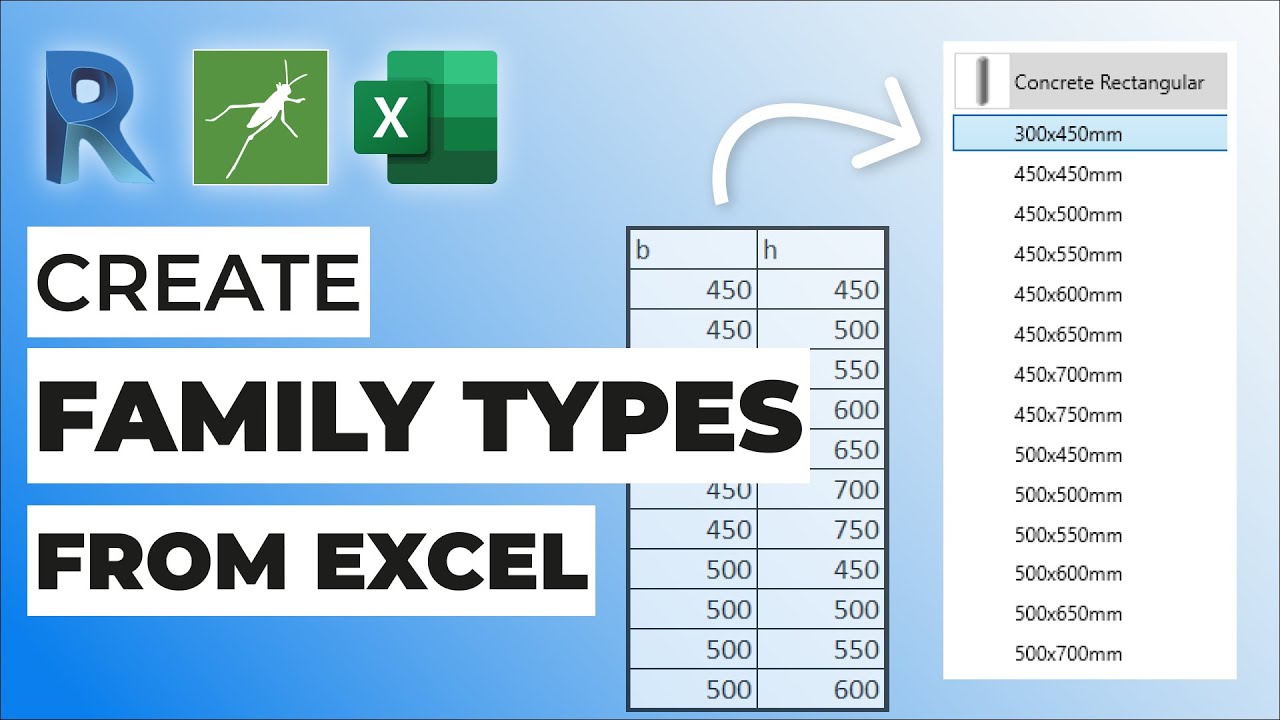Open New Opportunities with Ingenious Revit Plugins
Wiki Article
Damaging Barriers: Excel Importation Techniques for Advanced Revit Users
Explore various information importation techniques and master Excel integration to improve your Revit modeling capabilities. With our pointers and techniques, you can conquer importation obstacles and end up being a real professional in utilizing Excel for your Revit tasks.Advanced Revit Users: Leveraging Excel for Importation
You can easily utilize Excel for importation as an advanced Revit customer. Excel is a powerful tool that can significantly boost your process and efficiency in Revit. With its capability to take care of large quantities of information and carry out intricate calculations, Excel can be a beneficial asset in handling and arranging your project info.One means to leverage Excel for importation is by utilizing the "Link Excel" function in Revit. This attribute allows you to connect an Excel spread sheet directly into your Revit job, enabling you to upgrade and synchronize information between both programs. This can be especially helpful when managing schedules or tracking modifications in your task.
Another way to use Excel is by utilizing the "Import/Export" feature in Revit. This feature allows you to import and export data between Revit and Excel, providing you the adaptability to function with data in both programs. You can import data from Excel into Revit to create aspects such as doors, areas, or wall surfaces, and you can additionally export information from Revit to Excel for further analysis or reporting.

Exploring Information Importation Approaches in Revit Using Excel
Checking out exactly how to import information from Excel right into Revit uses reliable approaches for incorporating details. When you import information from Excel, you can seamlessly transfer data such as room schedules, material checklists, and tools information right into your Revit task. This procedure permits you to conserve time and initiative by staying clear of hand-operated information entrance.To import data from Excel into Revit, you can utilize the "Import/Export" feature. This feature allows you to map the Excel information areas to the equivalent Revit parameters, making certain that the details is appropriately appointed within the design. By choosing the suitable import options, you can regulate just how the data is imported and exactly how it engages with your job.
Another method for importing information from Excel right into Revit is by utilizing Eager beaver. Eager beaver is an aesthetic programs tool that incorporates with Revit and enables you to automate tasks and operations. With Dynamo, you can develop customized scripts that import data from Excel and adjust it within your Revit project. This approach supplies much more adaptability and modification choices.
Mastering Excel Assimilation for Advanced Revit Modeling
One vital technique is importing information from Excel spread sheets directly into your Revit design. With a couple of straightforward steps, you can map the Excel columns to the matching Revit specifications and import the information accurately.Another beneficial approach is exporting information from Revit to Excel. This enables you to extract info from your design, such as timetables or material quantities, and evaluate it in Excel utilizing solutions, graphes, or various other effective devices. By leveraging the capacities of Excel, you can execute complex calculations, produce custom-made records, and gain beneficial understandings right into your job.
Along with information transfer, Excel assimilation can automate repetitive tasks in Revit. By creating macros or scripts in Excel, you can automate processes like developing sights, creating sheets, or applying typical households - revit tool. This not just saves time but likewise makes certain uniformity throughout your job
To grasp Excel combination in Revit, it is published here important to comprehend the data structure and how Revit communicates with Excel. By familiarizing on your own with the readily available devices and methods, you can unlock the full capacity of Excel assimilation and take your Revit modeling to the following degree.
Overcoming Importation Challenges: Excel Techniques for Revit Specialists
When getting rid of importation difficulties, it's vital to be familiar with reliable Excel methods that can profit professionals in Revit. As an innovative Revit individual, you recognize the value of perfectly importing information from Excel into your jobs.
An additional helpful strategy is using the "Transpose" function in Excel. This permits you to convert data from rows to columns or the other way around. When importing data into Revit, this can be particularly handy when you have data in an upright layout in Excel, but you need it to be in a straight format in Revit.
Additionally, making use of Excel formulas such as VLOOKUP and INDEX-MATCH can considerably help in mapping data from Excel to Revit. These formulas permit you to look for certain worths in Excel and retrieve corresponding information from an additional column. When importing huge datasets into Revit., this can save you time and effort.
Excel Data Importation Advice for Advanced Revit Users
By familiarizing yourself with efficient Excel tips and tricks, you can boost your information importation process as a sophisticated user of Revit. Additionally, making use of Excel's "Paste Unique" function allows you to paste data from Excel right into Revit while preserving formatting, such as cell color or font design. One more useful trick is to make use of Excel's "Locate and Replace" feature to rapidly make changes to your data before importing it right into Revit.
Final Thought
You have now learned useful techniques for importing information from Excel into Revit as a sophisticated user. Go ahead, damage those barriers and stand out in your Revit More about the author projects!
When importing data into Revit, this can be particularly helpful when you have data in a vertical style in Excel, yet you need it to be in a straight style in Revit.
Moreover, making use of Excel solutions such as VLOOKUP and INDEX-MATCH can greatly aid in mapping information from Excel to Revit. In addition, using Excel's "Paste Unique" function permits you to paste data from Excel into Revit while keeping format, such as cell color or font style.
Report this wiki page